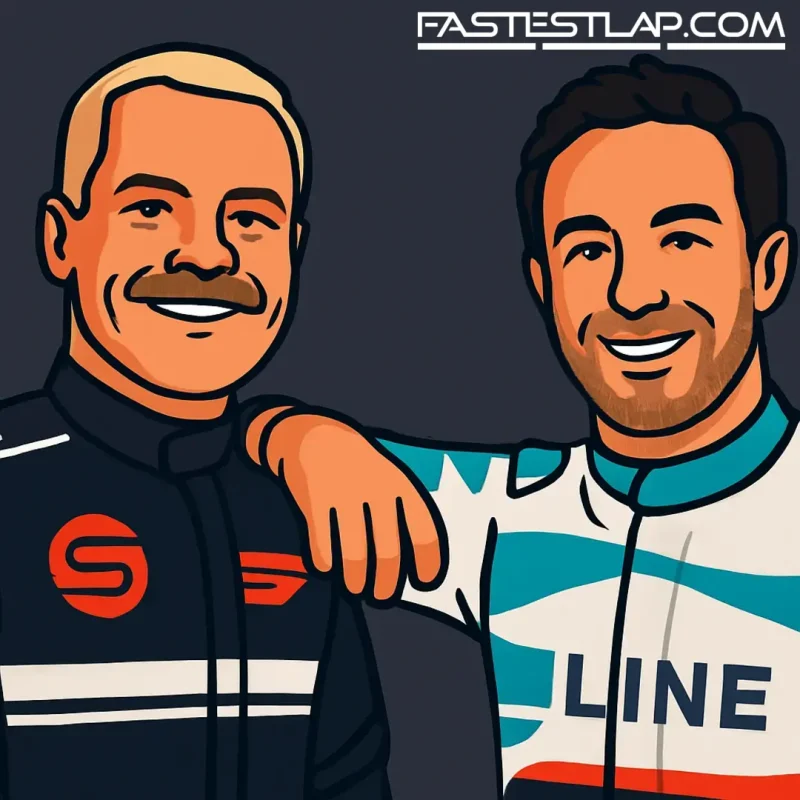Bottas and Pérez sign up for Cadillac’s 2026 F1 debut — and Steiner’s got a warning
Cadillac’s Formula 1 project has its driver room sorted, and it’s anything but a rookie intake. Valtteri Bottas and Sergio Pérez will spearhead the American brand’s 2026 debut, a veteran pairing that screams steady hands over shiny headlines. After sitting out the 2025 season, both will be back on the grid with a combined 527 starts and 16 wins between them — the kind of mileage a new entrant can bank on.
The team itself is taking shape with familiar names. Graeme Lowdon, formerly of Marussia, is running the show as team principal. Behind the scenes, Cadillac has recruited former Renault leaders Nick Chester (chief technical officer) and Rob White (chief operations officer), while Pat Symonds — who helped write the sport’s technical roadmap before — is on board as a heavyweight addition. It’s a serious-looking roster for a new outfit.
Yet nobody knows the booby traps of starting an F1 team quite like Guenther Steiner. The former Haas boss, who helped launch the last successful newcomer in 2016, didn’t sugarcoat the job ahead for Cadillac. His message, essentially: get the people right, or it’ll bite.
“When you put up an F1 team, the big picture gets smaller with every detail,” Steiner said in a recent appearance. “You need the best people around you. One person can’t do a project like this. You have to be very picky, because these are the people who will bring you success — or make you fail.”
Steiner’s point is well made. New teams don’t lose out because of one big mistake; they bleed time and points through a thousand tiny ones. Hiring is where you set your fate. It’s why the Bottas/Pérez move feels smart. Neither needs a map of the paddock. Both can build a car up from Monday to Sunday. They’ve fought for wins and titles, and they’ve also done the week-in, week-out graft at teams that aren’t winning. For a startup trying to establish standards, that’s gold.
Cadillac will be the first fresh entry since Haas, and it arrives into a radically different sport, with 2026 regulations promising lighter, more efficient machines and a reset of the energy balance. The clock to that first winter test will move fast. And Steiner’s other warning is one Cadillac’s leadership will know well: if a hire doesn’t fit, move on quickly.
“The challenge is thinking you’ve got the right people, and then after a few months you realise it isn’t,” Steiner added. “As bad as it sounds, you have to make changes. That’s business. You need to stay current with how everything is moving and keep the group motivated to do the right thing.”
The temptation for a new team is to chase flashy names and big PR waves. Cadillac’s gone for substance. Chester has led top-level engineering groups. White’s operations CV is thick with hard miles. Symonds brings a long view few can match. Add Lowdon’s calm presence and the commercial steer of CEO Dan Towriss, and the structure looks clear: build a competent organisation first, then push the performance envelope.
Now comes the hard part — laying down a car concept, staffing out the race team, tightening processes, and getting a development loop humming with two drivers who’ve seen, broken, and fixed just about everything you can in a Formula 1 weekend. Bottas’s sensitivity for a car’s mechanical platform and Pérez’s feel for tyre management could be a nice split of strengths for early correlation work.
There’ll be sceptics. New teams always inherit a raised eyebrow or two until the stopwatch is kind. And with the grid’s established players sharpening for 2026, the middle of the pack won’t be a gentle place to land. But Cadillac’s opening moves carry a theme: experience first, noise later.
If they keep being — as Steiner puts it — very picky, and ruthless when they need to be, this might just be a new team that behaves like an old one from day one. That’s usually how you survive your first season. And occasionally, it’s how you surprise people in the second.




